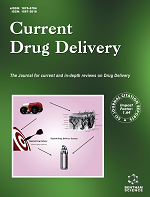-
s Utilization of Apatinib-loaded Nanoparticles for the Treatment of Ocular Neovascularization
- Source: Current Drug Delivery, Volume 16, Issue 2, Feb 2019, p. 153 - 163
-
- 01 Feb 2019
Abstract
Background: The current treatment of ocular neovascularization requires frequent intravitreal injections of anti-vascular endothelial growth factor (VEGF) agents that cause severe side effects. Objective: The purpose of this study is to prepare and characterize a novel nanoscale delivery system of apatinib for ocular neovascularization. Methods: The optimized formulation showed a particle size of 135.04 nm, polydispersity index (PDI) of 0.28 ± 0.07, encapsulation efficiency (EE) of 65.92%, zeta potential (ZP) of -23.70 ± 8.69 mV, and pH of 6.49 ± 0.20. In vitro release was carried out to demonstrate a 3.13-fold increase in the sustainability of apatinib-loaded nanoparticles versus free apatinib solution. Result: Cell viability and VEGFA and VEGFR2 expression were analyzed in animal retinal pigment epithelial (ARPE-19) cells. Conclusion: The results confirmed the hypothesis that apatinib nanoparticles decreased toxicity (1.36 ± 0.74 fold) and efficient VEGF inhibition (3.51 ± 0.02 fold) via VEGFR2 mediation.


